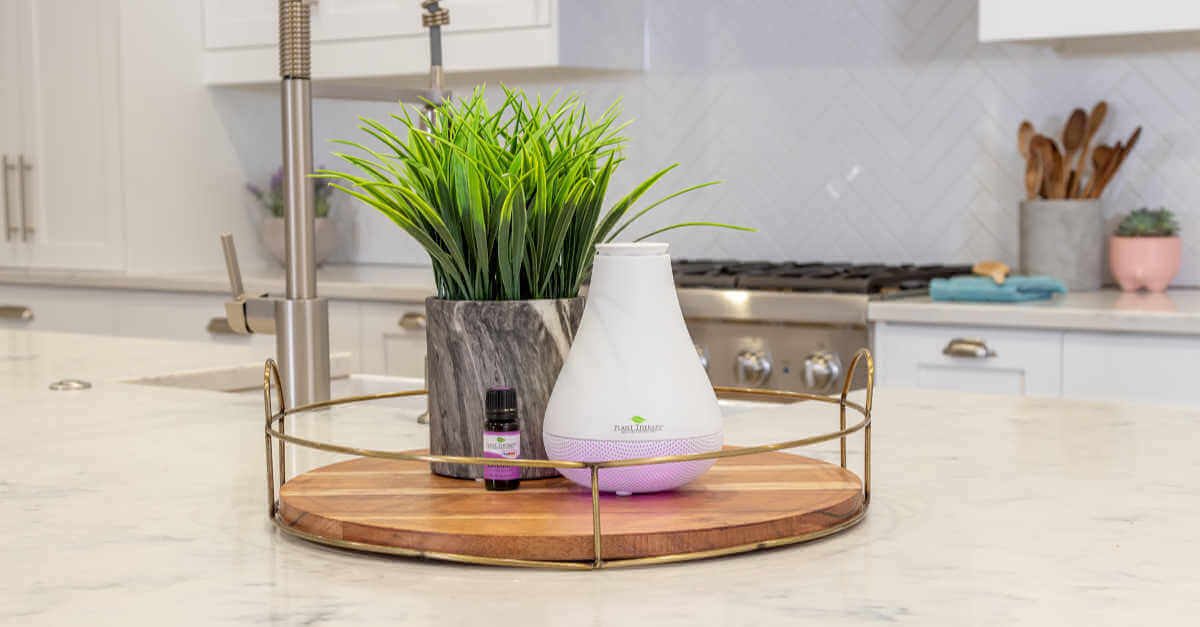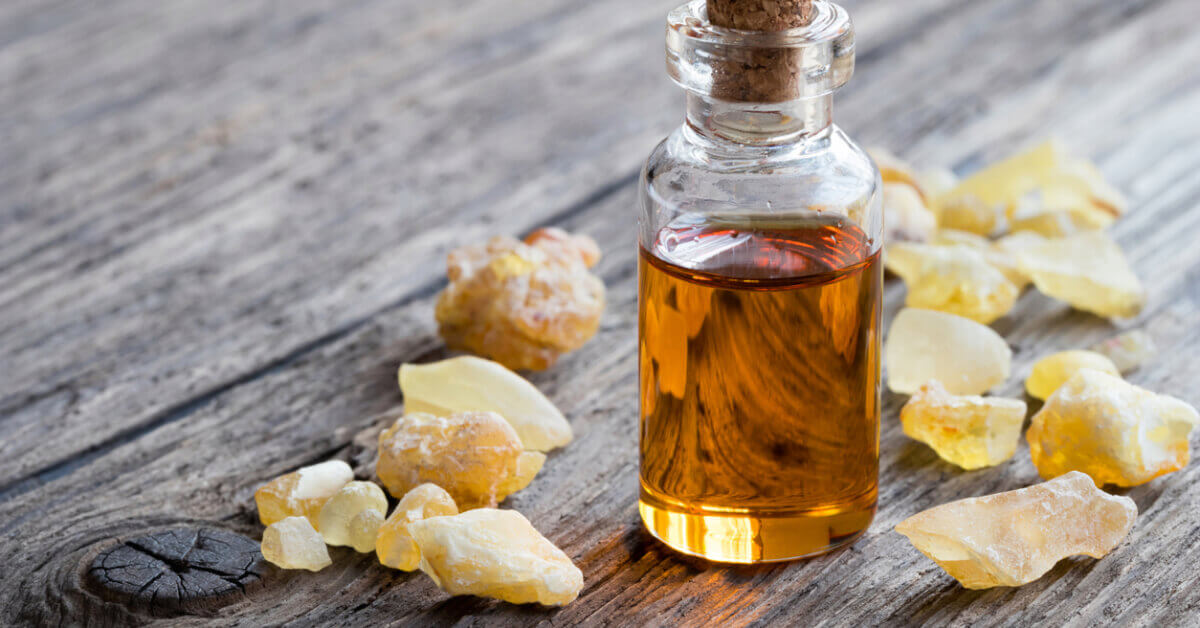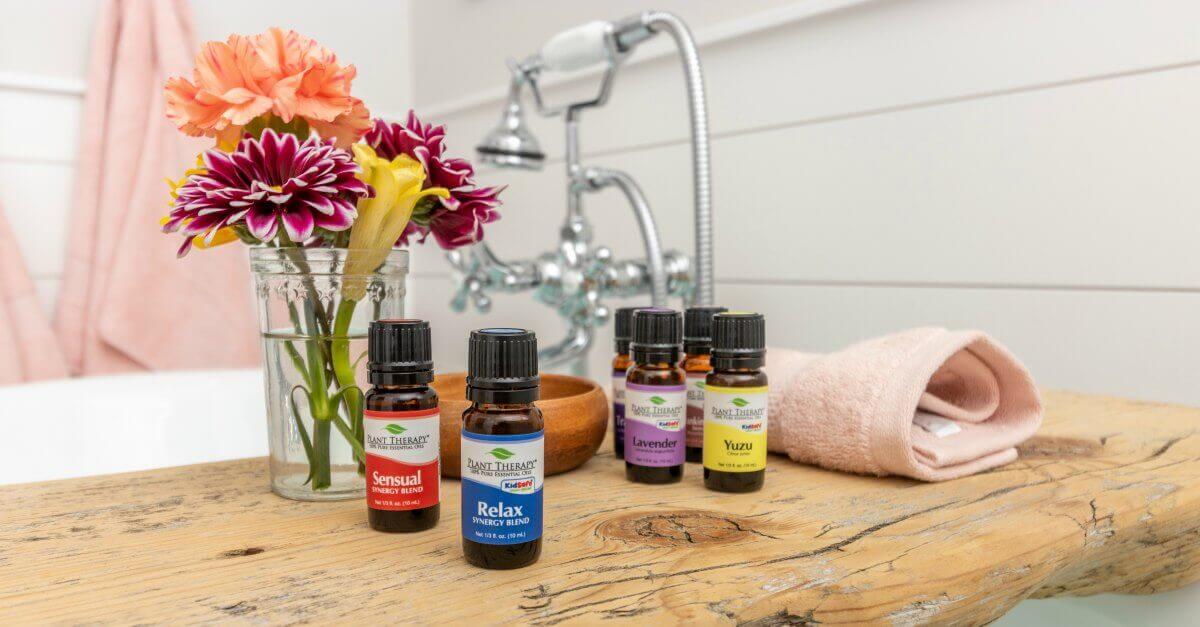One question we see often here at Plant Therapy: Do essential oils expire?
So let’s talk about essential oil expiration and shelf life! This is a question that we see a lot. There are a lot of misconceptions stemming from the significant increase in popularity essential oils have gotten over the past several years and I think it’s time we really dive in and take a deeper look.
Let’s start with the misconception itself. I’m sure at some point in your essential oil journey that you have heard someone say, “Well, if the oil is pure it does not expire.” You may have also heard that essential oils don’t grow mold, mildew, or yeast. All these things are true. Now you are probably staring at the screen thinking to yourself what a loon I am. Well, that may be true, but I’m not done.
So, do essential oils expire?
Essential oils do not expire. They do not grow mold. They also do not grow mildew or even yeast. The false hope these facts cause is that essential oils will last forever and that they have an indefinite shelf life. This is very far from the truth, and I’d like to explain why.
The Science
 Oxidation. Such a simple, yet complicated word. Oxidation is the process or result of oxidizing or being oxidized. Oxidized means to undergo or cause to undergo a reaction in which electrons are lost to another species. But wouldn’t that result in an oil becoming something else? Bingo. That’s exactly what it means, and why essential oils most definitely have a shelf life.
Oxidation. Such a simple, yet complicated word. Oxidation is the process or result of oxidizing or being oxidized. Oxidized means to undergo or cause to undergo a reaction in which electrons are lost to another species. But wouldn’t that result in an oil becoming something else? Bingo. That’s exactly what it means, and why essential oils most definitely have a shelf life.
When you look at essential oil safety, you’re really sitting down and looking at the chemical constituents that make up an oil, not really the oil itself. You look at the different constituents that an oil is composed of, the levels of each constituent, and the safety information attributed to each constituent. This is why GC/MS reports are so important because they tell you what exactly your oil is composed of and how much.
Throw oxidation back into the mix. The constituents that make up your essential oil start to break down and turn into new constituents altogether. What do they turn into exactly? Nobody knows. It depends on the constituent, the amount of time it’s been oxidizing, etc. The only way to tell for certain is to retest the oil.
Breaking It Down

Hopefully, by this point, you understand where we are going. While essential oils don’t “go bad” the way food does, they do change over time. And because they change over time, and we don’t know what’s in them, the safety of an oil can’t be fully determined. But the good news is, there are things you can do to slow down the rate of oxidation and extend the “life” of your oil but you need to know what contributes to an essential oil’s oxidation process.
Oxygen, heat, and light. Three everyday forces that greatly impact the shelf life of essential oils. Oxygen is probably the biggest contributing factor to oxidation since oxidation can’t happen without oxygen. Heat and light also contribute to oxidation, but for different reasons. Reasons we are not going to dive into, because, well… nobody wants this to turn into a full-blown chemistry lesson.
OXYGEN
Oxygen exposure can be reduced by ensuring your recap your essential oil bottles tightly and quickly. Don’t let your bottles sit out on the counter opened for too long. This allows oxygen to penetrate the bottle and increase the rate of oxidation. A pro-tip to consider is decanting your oils into smaller bottles as-needed. If you buy a 10ml bottle of essential oil and use 5ml or more, consider pouring the remaining oil into a smaller sized bottle.
HEAT
Heat exposure can be reduced by keeping your essential oils in a cool place, like a fridge. According to Robert Tisserand, the ideal temperature for essential oils is between 35 and 38 degrees. There are some things to consider, though. Because essential oils are so powerful and aromatic, they do have the ability to alter the taste of the food and beverages stored with them in the fridge. You can help reduce these effects by storing them in separate containers in the fridge. Or, you could do as I did and buy a whole separate fridge.
LIGHT
Light. Naturally, the way to reduce light exposure is to keep essential oils stored in a dark colored bottle and keep them in a dark, cool place. If you can’t afford a fridge for your essential oils, and you don’t have the room to store in them in your regular fridge, consider storing them in another dark and cool place like a cabinet.
Putting It All Together
Looking back on what we’ve learned, there is a whole lot of science and chemistry behind essential oils and their respective constituents. The problem is that while the oil may not go “bad” but it doesn’t stay the oil you know and love forever. It will begin to change and break down. And while there may not be an exact science behind the “shelf life” of an oil, there is a pretty good idea on how long an oil should last if stored properly.
You can check out our recommended shelf life chart here.
So now the question is, when does the shelf life start?
We cannot speak for every company’s essential oils, but Plant Therapy’s essential oils are stored in a barrel topped with a nitrogen barrier that helps keep oxygen out. This prevents oxidation while it waits for bottling. Once the oil has been bottled, we have a strict forecasting structure to prevent oils from sitting on the shelf for prolonged periods of time. Because we have these procedures in place, it gives us confidence that the shelf life of your oil will start as soon as it arrives to you.
Source: Plant Therapy

